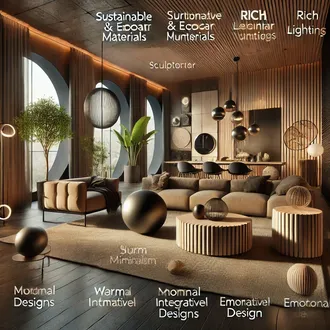Transcription Color combinations (Ii)
In this presentation we are going to know some of the main harmonies that you can use to achieve through color, a functional and aesthetically pleasing interior space and we will give you some recommendations to learn how to select the appropriate colors for a room.
In the previous presentation we referred to the color wheel, a tool that will allow us to better understand the harmonies and contrasts that we will explain today. We also learned that three colors -one dominant, one tonic and one mediation- are enough to achieve a successful interior decoration.
Types of harmonies
- Monochromatic harmonies are very easy to achieve since they are formed by combining light, medium and dark tones of a single color. They also admit the inclusion of some detail -cushions, pictures, plants, etc.- in another contrasting color. It should be noted that their use in very large rooms can be monotonous.
- The harmonies of analogous colors are those that are created using close colors on the color wheel, so they always have some feature in common. To avoid monotony and visual fatigue, you can also include -as in the previous type- some detail in another contrasting color. The dominant color in this type of harmony should be the one in the center of the colors selected on the color wheel.
- Harmonies of related colors are those achieved by using colors that have in their composition some common pigment. For example, if the key color is blue, yellows, greens, violets and other colors with bluish tones should be included in the composition. Harmonies of related colors can include colors that are far apart in the chromatic circle.
- Complementary color harmonies are achieved by using colors that are in opposite places on the color wheel. The purpose of these harmonies is to achieve more or less intense contrasts. The most intense contrasts are achieved when pure colors are used. Contrasts can be attenuated by adding black or white to one of the colors.
- Neighboring complementary color harmonies are achieved by using colors that are next to the direct complementary color. These harmonies achieve less intense contrasts than the previous ones.
- The harmonies of warm and cold tones are achieved by combining colors that have common or contrasting temperature properties.
Warm colors - reddish, oranges and yellows - are stimulating; cold colors - greenish, blue, violet - are relaxing.
The degree of warmth or coolness of a color can be managed by making mixtures, for example: a bluish green can be cooler than pure green; while a yellowish green is perceived as warmer.
Recommendations for selecting colors for a room
- Value the client's criteria, taking into account his needs, tastes and personality. The decorator must keep in mind that in order to satisfy the needs and tastes of the client, the first thing he needs to do is to really know what he wants; because although clients assign colors to walls and accessories saying they are very sure of what they want, most of them do not have the capacity to imagine the final result, so that after the work is finished, they are disappointed, although sometimes they do not show it.
Such mistakes can be avoided if the decorator dedicates the necessary time to advise the client. For success in this task, it is essential that the professional, using 3D computer programs, shows the different variants of his proposals, and listens carefully to the client's criteria, since they are the key to interpreting what the client really wants. This method is much more effective when practiced more than once.
- Value how we can improve through the use of colors the perception of shapes and dimensions of the interior space.
Remember that when the space is too small, in order to extend its apparent dimensions, light colors with cold tones -blue, green or gray- should be used; these colors are perceived further away, making the room seem larger.
On the contrary, to create the illusion of a smaller room, dark and saturated warm tones should be used, these colors are perceived closer, making the room seem smaller.
- Keep in mind that colors should be conducive to the development of different tasks to be carried out in different spaces: the hallways require warm tones, which convey confidence and security to the visitor; however, in living rooms and dining rooms you can combine warm and cool colors to create a balanced atmosphere, which does not irritate or bore those who stay long in them.
On the other hand, kitchens should have luminous colors that allow to see better; however, when selecting the colors of the bathroom we must take into account the habits of the clients, since some of them conceive it as an area to relax -where less luminous colors would be appropriate-, while others pass through it in a hurry, so they require more luminous colors.
- Assess the possible color changes in objects due to the effects of light. Both natural and artificial light suffer variations of tonalities that interact with colors, causing important variations in the ways of perceiving them. All the artificial lights that are used do not have a well-balanced spectrum, for example: some types of fluorescent lamps emit cold light; on the contrary, candles and incandescent lamps that are used to reinforce some environments, emit a warm light.
The amount and type of natural light that a room receives, must also be valued; since depending on the materials and location of the doors and windows, it will receive more or less light throughout the day and will give us a more or less warm feeling. For example: The light of the last hours of the day we generally perceive it warmer than the light of dawn.
color combination 2




